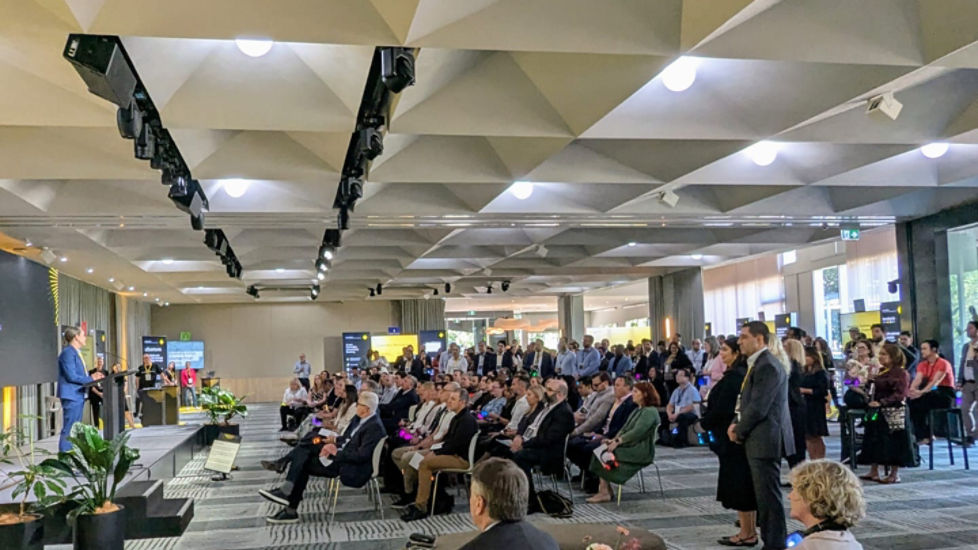Uncovering customer needs
Macey says the pandemic has largely halted the face-to-face “micro-meetings” that have historically sparked new customer insights, creating what Harvard Business Review has called an in-person “data deficit”.1
Yet it has also amplified an already huge volume of online customer data. A 2020 McKinsey & Company survey found that, globally, the average share of customer interactions that are digital increased from 36% to 58% from December 2019 to July 2020, with further increases likely since then.2
“All of those little sparks have gone for the business, so they're forced more to rely on data than they were before – and the data is there, if you know how to capture it,” says Macey.
He says the most successful businesses use structured programs to gather and classify data from the widest possible range of online sources, including their own customer reviews, external review sites, a full range of social media, online interaction, loyalty program and transaction data.
“Some larger businesses have teams focused on this, getting under all of their sources of data and layering it up,” he says. “Then they can use it to really drill down into those different segments – whether they’re the high value customers who always buy from you, or price-seekers, or those driven by being seen to be part of a tribe.”
“The aim is to create really personalised, targeted offerings, because particularly now, we are very unforgiving of businesses that don’t treat us as individuals."
In its report, Building your data analytics capabilities, Deloitte notes that it’s also important for businesses to have the right analytic tools that are developed enough to grow as the business grows.3
Three emerging consumer trends
So how have consumer behaviours changed during the pandemic? Macey points to three key trends, identified in CommBank’s inaugural Consumer Insights Report (PDF)
1. More are moving online – up to a point: while it’s no surprise that the pandemic has accelerated the move to online purchasing, in-store remains the preference in most categories. However, more than 80% of the consumers who used click-and-collect more often during the pandemic say they will continue to use do so in future.
2. Consumers are supporting local businesses: 52% of Australians believe locally sourced and manufactured products are now more important.
3. Purposeful consumption is on the rise: consumers are becoming more selective and purposeful in their choices – both because of economic uncertainty, but also because of a heightened awareness of sustainability and responsible consumption. Among the 46% who say they are now spending more time cooking at home, half say they will continue to do so when the pandemic is over.
How businesses are responding
One business making clever use of customer data to tap in to the rise in home dining is the Australian Meat Emporium. Serving around 4,000 customers a week, the business enjoyed significant growth in the wake of the pandemic. The owners responded by seeking out data to help them understand a growing customer base – who they were, where they lived, and what they wanted.
They started by using transaction data, to develop a detailed digital map of their customers. They then used customer conversations to add another layer of qualitative data, creating a monthly ‘bubble map‘ to track customers’ changing preferences, predict demand, and deploy their advertising budget to maximum effect.
Another food business, Hussey and Co, was already well positioned to spot changing customer preferences, allowing it to pivot rapidly when the pandemic undercut its existing business model.
Hussey grows, packages and supplies gourmet baby salad leaf mixes to the food service and retail sector across Australia. Previously, revenue came from a 50:50 split between food service and retail – so when coronavirus hit last year, sales dropped by 40% almost immediately.
“Because every part of the business is highly measured, we could watch what was happening and implement changes,” says Jeremy Haw, owner of Hussey.
Haw says his business data showed that many of the 1.5kg boxes of leaves they had been selling into food service were now going to green grocers. Instead of continuing to supply the bulk packs, Haw worked with the grocers and their agents to supply cartons of smaller portions ready for sale. The grocers were happy to support the change, there was upside for the agents and it allowed Haw to benefit by selling a value-add product. He’s also introduced a new 500g salad bag for door-to-door delivery services, which were immediately popular.
Unlocking the power of data
Macey says the most sophisticated businesses use behavioural analysis, often informed by neuroscientists, to predict demand and tailor their products for different customer segments. However, that doesn’t mean large businesses with greater resources are always at an advantage.
“It’s a lot easier to build a single view of your customer if you're a small business working in the cloud, rather than a large business having to plug different bits of your legacy information systems together,” explains Macey.
The key is to focus on customer behaviours, rather than purchases.
“You've got to think about customer journeys through data,” says Macey. “So segment your data around the way the customer interacts with you, rather than building backwards from a transaction.”
That helps you spot the critical points where potential customers fall away before they buy.
“You need to ask: what data do I need at each point to understand where I could be dropping customers along this purchase journey? Then you need to obsess over that data, fill all the gaps in your jigsaw puzzle and think about it in the way that the customer would think about it.”
He cautions that it’s not enough to look in the rear view mirror and see what your customers did last. You also need to find opportunities to identify emerging trends.
“Even if you've got the best single source of truth database … it's not telling you about forward looking trends. You need to go and get that information from elsewhere.”
This article is part of the CommBank Foresight Spotlight Series. Visit Spotlight




